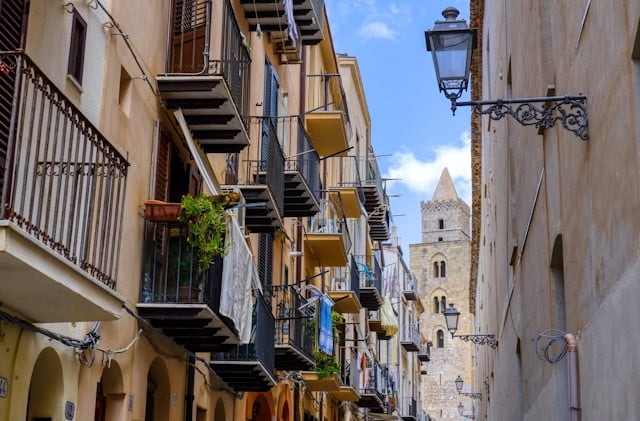For non-EU citizens, getting your visa to relocate to Italy can be a lengthy and complex process – so when you finally get your passport returned with that visa page inside, you’ll want to take a moment to celebrate.
But before you put up your feet and get too comfortable, you’ll need to start preparing for the next stage: setting yourself up as a resident once you arrive.
Here are the main steps you’ll need to complete in order to start your new life in Italy.
Get your residency permit
If you’re a non-EU national, one of the first things you’ll need to do on arriving in Italy is apply for your residency permit, or permesso di soggiorno.
You’re supposed to do this within just eight days of entering the country, by going to the sportello amico counter of your post office and asking for an application kit (kit giallo).
You’ll then be given a date for an appointment with your questura, or police headquarters, where you’ll give your fingerprints. After this, it’s just a matter of waiting for the card to arrive and going to pick it up.
READ ALSO: Permesso di soggiorno: A complete guide to getting Italy’s residency permit
If you have EU citizenship, you don’t need a residency permit to stay in Italy, though you will have to complete the other steps listed here.
Get a tax code
An Italian tax code or codice fiscale is the equivalent of your Social Security or National Insurance number. It’s essential for carrying out many everyday activities – so you’ll want to make getting this one of the first things you do.
Fortunately, the codice fiscale is relatively straightforward to obtain, and you can even do it outside of Italy by going to your Italian embassy or consulate.
READ ALSO: Codice fiscale: How to get your Italian tax code (and why you need one)
If you’re an EU national in Italy, you can get your tax code by going to your local Agenzia delle Entrate, or tax office. For non-EU nationals, it depends on your situation: you might instead need to go to the immigration desk at your local prefettura (prefecture), or your questura.
Unlike most other bureaucratic documents, you should receive your tax code there and then if you’re applying in person at the office.

Register as a resident with your town hall
Anyone planning to stay in Italy for more than 90 days, must register with the Ufficio Anagrafe (registry office) of the town you’re living in in a process known as an iscrizione anagrafica.
The iscrizione anagrafica is needed to issue you with an Italian ID card (carta d’identità) and residency certificate (certificato di residenza), which are necessary to complete most bureaucratic tasks in Italy.
READ ALSO: How to register with the anagrafe in Italy
This works differently in different places; some towns require you to make an appointment; some allow you to apply online or via email. You can check the website of your comune (town hall) for information, or go and ask in person.
To make the registration you’ll need at least your residency permit (if a non-EU citizen), your tax code, a declaration of your address (dichiarazione di residenza), proof of healthcare coverage, and other documents according to your status.
Sign up for healthcare
All Italian residents are legally required to have healthcare coverage, whether privately or by registering with the country’s national health service (Servizio sanitario nazionale, or SSN).
You’ll most likely have arrived in Italy on some kind of private health insurance, as you generally need to show proof of this in order to complete your iscrizione anagrafica and obtain a residency certificate.
Many people subsequently choose to sign up to the SSN, however, as it’s often cheaper (though the government significantly hiked the rates for voluntary registration at the start of this year), and, for some categories of people including workers and family members of Italian citizens, free.
READ ALSO: Tessera sanitaria: How do you apply for or renew your Italian health card?
To sign up to the SSN, you’ll likely need to make multiple trips to your local ASL, or Agenzia Sanitaria Locale (local health authority) office. You’ll ultimately be issued with a tessera sanitaria, or health card, which is proof of your SSN registration.
Get an Italian SIM card
If you’re relocating permanently to Italy, you’ll want to get a SIM card early on to avoid racking up roaming fees with your home country carrier.
You’ll need to go to the shop in person with photo ID (preferably a passport) and probably your codice fiscale, as many providers require this information before they can issue you with a card.
READ ALSO: Why you’ll need to report a lost Italian SIM card to the police
Bear in mind you’ll only be able to use an Italian SIM card if your phone is unlocked, so you’ll want to make sure you sort this out before you leave your home country.



 Please whitelist us to continue reading.
Please whitelist us to continue reading.
Member comments